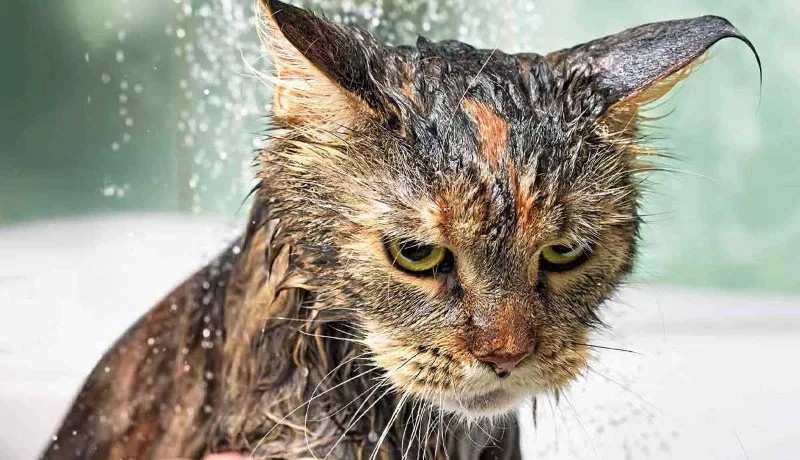
- 1. The Evolutionary Roots of Cats and Water
- 2. Cats as Desert Dwellers: Why They Avoid Water
- 3. Cats and Their Natural Instincts: Survival Mechanisms
- 4. How to Help Your Cat Get Comfortable with Water
- 5. When Do Cats Actually Like Water?
- 6. Why Choose Omnia Pet for Your Pet Care Needs
1. The Evolutionary Roots of Cats and Water
Understanding why cats dislike water involves diving into their evolutionary history. Unlike dogs, which evolved alongside humans for millennia and were often exposed to water for tasks like herding or fetching, cats evolved from solitary predators. They adapted to environments where water was not essential for their survival, thus developing a natural aversion to water.
Wild ancestors of modern cats, such as the African wildcat, lived in arid regions where they seldom came into contact with bodies of water. Over time, cats became highly specialized hunters that used stealth and agility to stalk prey. This environment didn’t require them to develop a tolerance for water, which is one reason why domestic cats often react negatively to it.
2. Cats as Desert Dwellers: Why They Avoid Water
Many domestic cats still retain the instincts of their wild ancestors. They come from a lineage of animals that were adapted to desert-like environments, where water was scarce and unnecessary for daily life. As a result, water is not something they seek out. In fact, many cats are more sensitive to water than other animals because they evolved in places where they didn’t need to come into contact with it for survival.
The evolution of their coats also plays a role. Cats have fur that is designed to keep them warm and dry, and getting wet can weigh them down, making it harder to move stealthily. Wet fur also takes a long time to dry, which could be uncomfortable for them. This combination of factors leads to an instinctual aversion to water.
3. Cats and Their Natural Instincts: Survival Mechanisms
Cats are territorial creatures with strong survival instincts. Their sensitivity to their surroundings is heightened, and they are more likely to avoid unfamiliar situations that could pose a threat. Water is one of those situations. When a cat is exposed to water, it often perceives it as an unfamiliar element that could jeopardize its safety or comfort.
In the wild, getting wet could be dangerous. Wet fur can lead to hypothermia or a loss of body heat, which is a significant risk for a small predator like a cat. As a result, this ingrained fear of water can be difficult to overcome, even for domesticated cats who are well cared for and safe inside the home.
4. How to Help Your Cat Get Comfortable with Water
While many cats dislike water, it is possible to help them become more comfortable with it. Here are a few strategies to gradually ease your cat’s fear of water:
- Start Slowly: Introduce water in a non-threatening way. Start with small amounts of water near your cat's paws and gradually increase the exposure. Never force your cat into water.
- Use Positive Reinforcement: Reward your cat with treats and praise when it approaches water on its own or stays calm during water-related activities.
- Bathing Your Cat: If you need to bathe your cat, use a gentle approach. Make sure the water temperature is comfortable and keep the bath short. Some cats may never get used to baths, so it’s important to be patient.
- Water Play: Try using a shallow bowl or a cat-friendly water fountain to make water more enticing and interactive. Let your cat explore at its own pace.
5. When Do Cats Actually Like Water?
Although it’s true that most cats dislike water, there are exceptions. Some cats may actually enjoy water, especially if they have had positive experiences with it. Here are a few scenarios where cats might show an interest in water:
- Curiosity: Cats are naturally curious animals. If they see moving water, such as a dripping faucet or a fish tank, they may become interested and investigate.
- Playfulness: Some cats enjoy playing with water, especially if it’s in a shallow container where they can dip their paws and splash around.
- Heat: On a hot day, some cats might seek out a water source to cool off. This is particularly true for cats in hotter climates who are accustomed to finding ways to regulate their body temperature.
6. Why Choose Omnia Pet for Your Pet Care Needs
If you’re a cat owner looking to learn more about feline behavior, provide the best care for your pet, or need products for water play and bathing, Omnia Pet is the perfect place to shop. Our selection of pet care products, including water fountains, grooming supplies, and bath accessories, will help you create a comfortable environment for your cat.
Visit Omnia Pet today for expert advice, quality products, and personalized care to ensure your pet’s happiness and well-being.


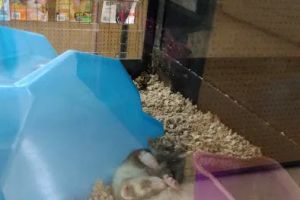


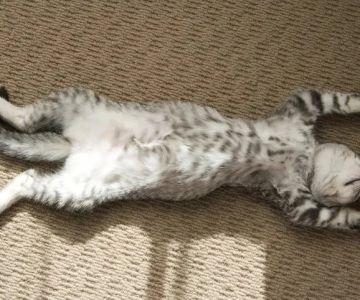
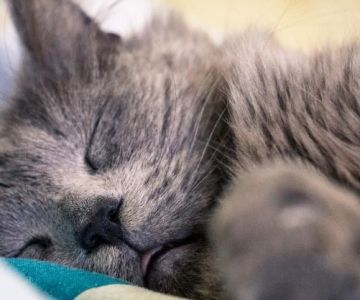


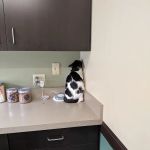 VCA Rotherwood Animal Hospital4.0 (113 reviews)
VCA Rotherwood Animal Hospital4.0 (113 reviews) Windham Animal Hospital4.0 (630 reviews)
Windham Animal Hospital4.0 (630 reviews) Central Veterinary Hospital4.0 (208 reviews)
Central Veterinary Hospital4.0 (208 reviews) Petco4.0 (694 reviews)
Petco4.0 (694 reviews) Chuck & Don's Pet Food & Supplies4.0 (426 reviews)
Chuck & Don's Pet Food & Supplies4.0 (426 reviews) Williamsburg Animal Clinic4.0 (503 reviews)
Williamsburg Animal Clinic4.0 (503 reviews) The Science of a Kitten's Hearing Development: Understanding Their Sensory Growth
The Science of a Kitten's Hearing Development: Understanding Their Sensory Growth How to Build a 'Catio' (Cat Patio) for Safe Outdoor Time
How to Build a 'Catio' (Cat Patio) for Safe Outdoor Time The Top 10 Most Common Kitten Behavioral Issues
The Top 10 Most Common Kitten Behavioral Issues Best Pet Health Insurance for Cats: A Comprehensive Comparison
Best Pet Health Insurance for Cats: A Comprehensive Comparison The Best Diet for a Sphynx Kitten's Oily Skin
The Best Diet for a Sphynx Kitten's Oily Skin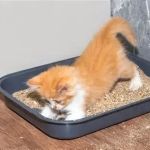 Why Do Kittens Like to Play in Empty Boxes? Uncover the Fun and Fascination
Why Do Kittens Like to Play in Empty Boxes? Uncover the Fun and Fascination